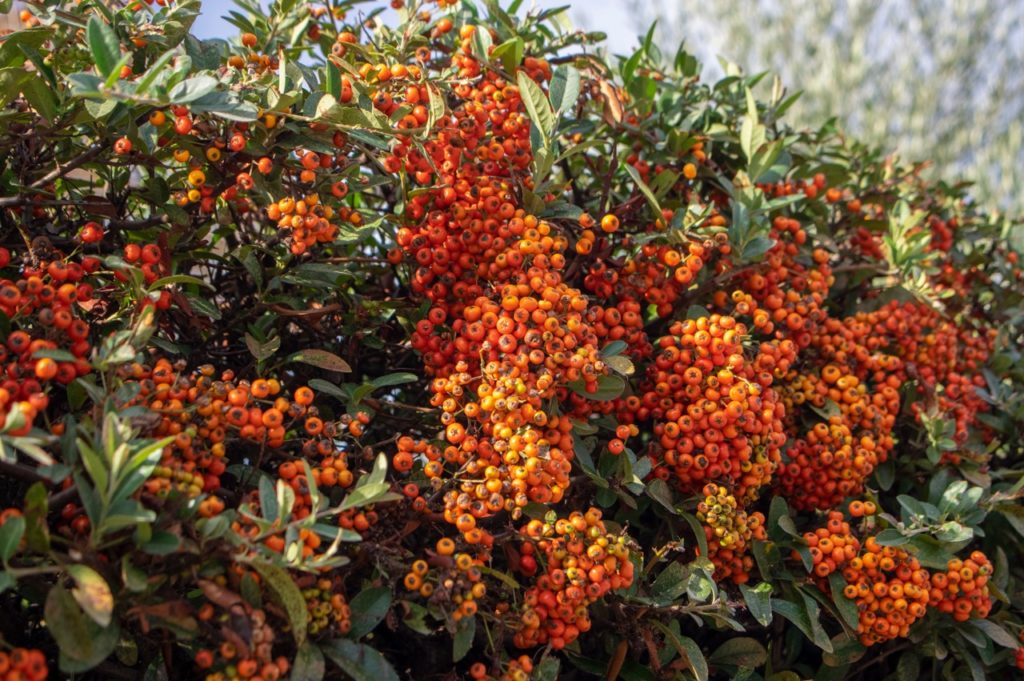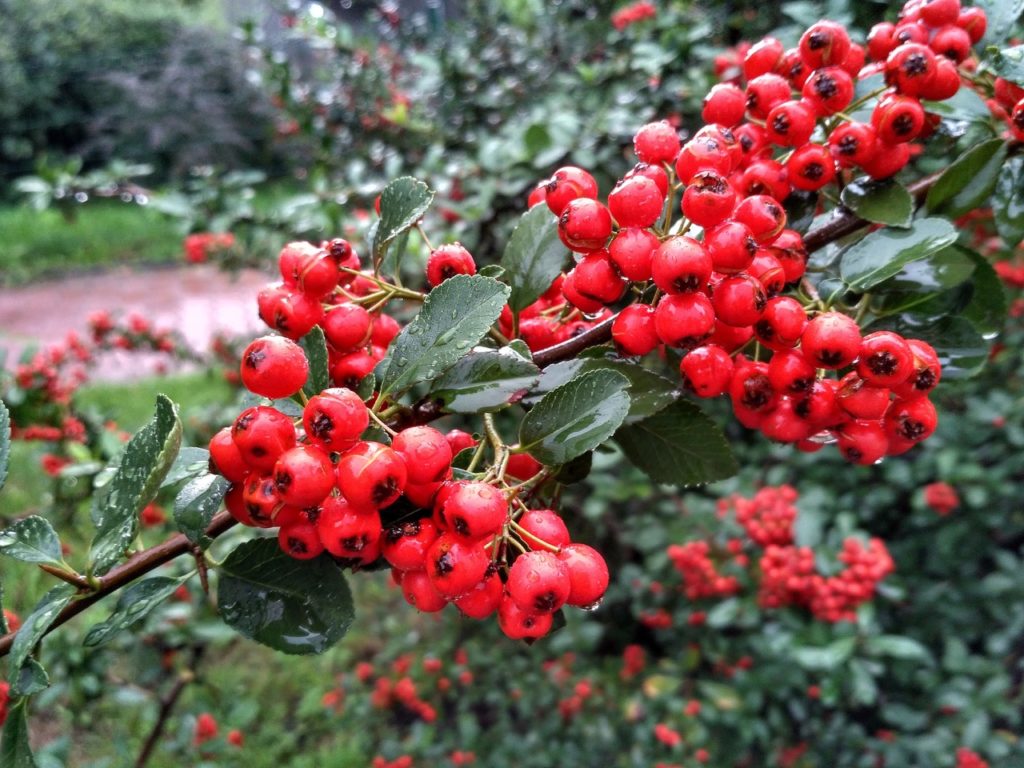SHRUBS > PYRACANTHA > PLANTING

Elizabeth is a Permaculture Garden Designer, Sustainability Consultant and Professional Writer, working as an advocate for positive change. She graduated from the University of St. Andrews with an MA in English and Philosophy and obtained a Diploma in Applied Permaculture Design from the Permaculture Association.
Reviewed By DAN ORI

Dan has over 27 years’ under his belt caring for plants and gardens. Working as a Horticultural Instructor and Consultant, he draws on a diverse range of experience that includes working as a Head Gardener, Tree Surgeon, Garden Centre Trouble Shooter, and writer of academic papers. Dan has a Level 3 Diploma in Horticulture and is currently a candidate for the RHS’s most prestigious award – The Master of Horticulture.
IN THIS GUIDE
PYRACANTHA GUIDES
Cuttings Propagation
Planting
Pruning
Pyracantha can be useful evergreen shrubs for their ornamental value and their appeal to wildlife in a garden.
They flower attractively and the flowers are followed by the stars of the show, the beautiful berries that come in fiery hues ranging from red through orange to yellow.
If you would like to plant pyracantha in your garden, here is a simple outline of the process to follow:
- Choose which cultivar of pyracantha you want to grow.
- Decide where to grow your pyracantha.
- Prepare your growing area with healthy soil or compost, mulch and potentially a trellis or other climbing structure.
- Plant your pyracantha in a hole in its new spot and firm in well around the roots.
- Water in and add additional organic mulch if required.
Read on for further information to guide you through each of these steps:
1) Choose A Variety To Grow
If you would like to plant pyracantha in your garden, then the first decision that you will have to make is which specific variety you would like to grow.
While pyracanthas all share certain similarities, they do have some distinct characteristics and requirements depending on which one you choose.

Aside from visual appearance, one of the most important things to consider, of course, is how large a variety is likely to grow.
Some are far smaller and more compact than others and are better suited to smaller gardens or container growing.
“Sometimes you may want to avoid planting Pyracantha if you know you have fireblight in your garden as it is moderately susceptible,” says Master Horticulturist Dan Ori.
“Fireblight is a bacterial disease that affects plants in Rosaceae (The rose family). That said, I would not let this put you off planting one if it is healthy and your garden is free from fireblight.”
2) Find A Suitable Growing Position
The choice of which pyracantha to grow should be considered in conjunction with where the plant will grow and how it will be used within the design of the garden.
Pyracanthas can be grown as stand-alone shrubs which are a great low-maintenance choice, but you might also grow certain varieties suited to growing as a hedge.
Pyracantha can also be trained or espaliered against a wall or fence.

Pyracantha is not a particularly fussy plant.
It can cope with full sun or partly shaded conditions, with any orientation, though the berries won’t be produced in abundance in more deeply shaded positions.
This shrub can grow well in most soil types, from very dry, free-draining soils to heavy clays, as long as waterlogged conditions do not arise.
Moderately fertile conditions will provide the best results.
3) Prepare The Growing Area
Once you have decided where to grow your pyracantha, it is time to prepare the area.
When growing pyracanthas, it is a good idea to mulch the area where the pyracantha is to be grown with organic matter to ensure moderately fertile and healthy soil.

If you are growing pyracantha against a wall or fence, you may wish to put support wires in place to espalier the plant on the vertical surface.
It is a good idea to place the support structures before you plant your new pyracantha in the ground.
4) Plant Out & Firm Around The Roots
Once the soil and any supports are prepared, it is time to actually plant your new shrubs.
The best time to plant pyracantha is in autumn or early spring.
Place stand-alone specimens at least 1.5-3m apart, whilst hedging varieties can be placed at a distance of approximately 50cm.
If you are growing pyracanthas against a wall or fence, make sure that you plant it at least 50cm out from the base of the wall or fence in order to keep it out of the rain shadow.

When planting, simply create a hole to the depth of and wider than the existing root system of the shrub.
Then, place the plant into the hole and firm the soil back around the edges of the roots.
Make sure that the shrub sits at the same depth in the soil as it did in its previous position or pot.
5) Post-Planting Care
After you have planted your pyracantha shrub, make sure that you give it the best chance of establishing by watering it in, ensuring that water drains relatively freely so waterlogged soil cannot occur.

It is also a good idea to add more organic mulch on the surface around your new additions, spreading it over the soil but taking care not to mound it around the trunk or stems of the plant.
Replenish the mulch each spring and water during dry spells at first, and the plant should soon become a low-maintenance fixture in your garden.

